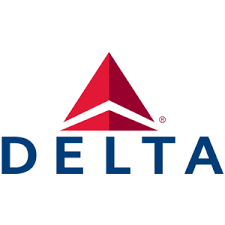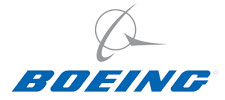Case Studies
Clients (Direct and Indirect)For over twenty years, we have been innovating to enable industry leading customer service and to redefine the customer experience.
Customers We Worked With
Delta Air Lines
(Number 1 ranked US Airline)
The problem: One of the largest airlines in the US was known throughout the industry as an industry laggard, trailing the competition.
The Solution: We laid out a multi-year technology renewal plan that included redesigning the customer experience and the operational systems.
A new infrastructure platform was built to enable the information that drives airline operations in real-time, along with re-usable common services to accelerate delivery of fully integrated business applications, from the gate to the ticket counter, from baggage service to the tower and the operations control center.
The Impact: Delta was able to leap past the competition and claim the lead in technology and innovation, delivering reliable solutions four times faster, monitoring and connecting the airline operations with accurate information to make timely decisions based on good and bad circumstances like weather or equipment.
An overbooked wide-body aircraft that once took 9 agents to board and left late was able to be boarded by 2 agents and be ready for departure early.
Macy’s Logistics
The problem: People often buy furniture while building or remodeling a home and wait months to schedule delivery. Additionally, many orders with multiple pieces are held up waiting for one piece of furniture that may be on back order. This filled up warehouses, limited stock on-hand for major sales, and blocked other customer orders, requiring additional warehouse space to be leased to meet customer demand.
The Solution: We started using the ships as warehouses while on the water. We could schedule deliveries directly from the port to the customer when the ship came in, and we put systems and processes in place to combine furniture orders based on delivery schedules.
The Impact: No additional warehouse space was required, eliminating leasing expenses and delivery of furniture. Macy’s furniture sales contributed to record sales growth of over $4.2B in the following three years, enabling the flow of $38B of products per year through the logistics channels.
Macy’s/Bloomingdale’s
The problem: Macy’s sales channels were managed as separate business entities with limited integration, and was losing business to their competition.
The Solution: Macy’s systems and processes were redesigned to get the right products to customers at the right time, from anywhere, whether in-store, online, or by phone and mobile app. Analytics were developed to determine the best mix of product by location and channel, and the logistics, marketing, advertising, and offers systems were redesigned to better know and delight the customer.
The Impact: Sales increased by more than $1B year over year and grew over $4B in a 3-year span.
Hawaiian Airlines/Alaska Airlines
(Top 5 ranked US Airlines)
The problem: Aircrews (Pilots and Flight Attendants) had limited access to information about their flights, weather, and communication with airline operations management. They also carried bulky paper flight manuals that had to be kept up to date by hand to avoid expensive fines from the FAA.
The Solution: We implemented mobile devices that reduced the weight of paper manuals and saved hundreds of hours updating them by hand every day.
The Impact: It eliminated the risk of expensive regulatory fines, improved communications between aircrews and ground operations, improved crew scheduling, and provided a platform to quickly deploy solutions such as onboard sales, loyalty, marketing, and customer service.
Boeing
The problem: Hawaiian Airlines purchased 12 new Boeing 787 widebody jets to expand their international business, but it required a significant amount of infrastructure and security to maintain the aircraft and keep it flying.
The Solution: We created an e-enabling program to manage the uploading of avionics software updates, and the downloading and analysis of aircraft health and security data from the major onboard systems, based on Boeing and FAA requirements and regulations.
The program brought together business leaders from across the airline from Maintenance and Engineering, IT, Field Services and Information Security to implement a secure infrastructure and ensure the business readiness for entry into revenue service.
The Impact: The first Boeing 787-9 Dreamliner was delivered in February 2024 and entered into service in April 2024. By the end of 2025, four aircraft are scheduled to be flying, opening the international business market beyond Asia Pacific and into Europe.
Federal Aviation Administration
The problem: Roughly 40% of new commercial aircraft have an onboard network that has regulatory requirements for securing the onboard aircraft network.
The Solution: We developed an Aircraft Network Security Plan (ANSP) that contains standard operating procedures and instructions in flight operations manuals to ensure the security of the aircraft systems.
The Impact: The ANSP is in place and has in in regular review and approval with the FAA.
Department of Homeland Security – TSA
The problem: The Department of Homeland Security has airport security requirements for air crews on commercial airlines to manage who has access to the aircraft cockpit, to allow aircrews to expedite moving through airport security to get to flights, and to also maintain information on pilots that is shared across airlines.
The Solution: We implemented a Known Crew Member (KCM) system, a Cockpit Access Security System (CASS), and a Pilot Records Database to comply with regulations while the programs were changing and being restructured by the FAA and TSA.
The Impact: Flight crews are able to get to their flights without concern for large security lines in the airports, allowing them time to prepare for and focus on their main goal of safely getting passengers to their destinations.
The aircraft cockpit has strict security procedures to ensure no unauthorized people have access, and there is an industry-wide source of information on pilot performance, and any Legal or HR disciplinary action associated with pilots in their current or future positions with airlines.
Amazon Prime Air
The problem: Amazon partners with various commercial airlines to transport and deliver packages and freight around the world. Hawaiian Airlines entered into an agreement to fly and maintain 10 Airbus 330 freighters for Amazon with a short timeline to set up a new business model.
The Solution: We planned and implemented solutions for managing flights, crews, and load planning, as well as facilities and logistics to support flights to new cities serviced by Amazon.
The Impact: All 10 aircraft are now in operation and new cities are being added for carrying packages for on-time delivery to Amazon customers.








